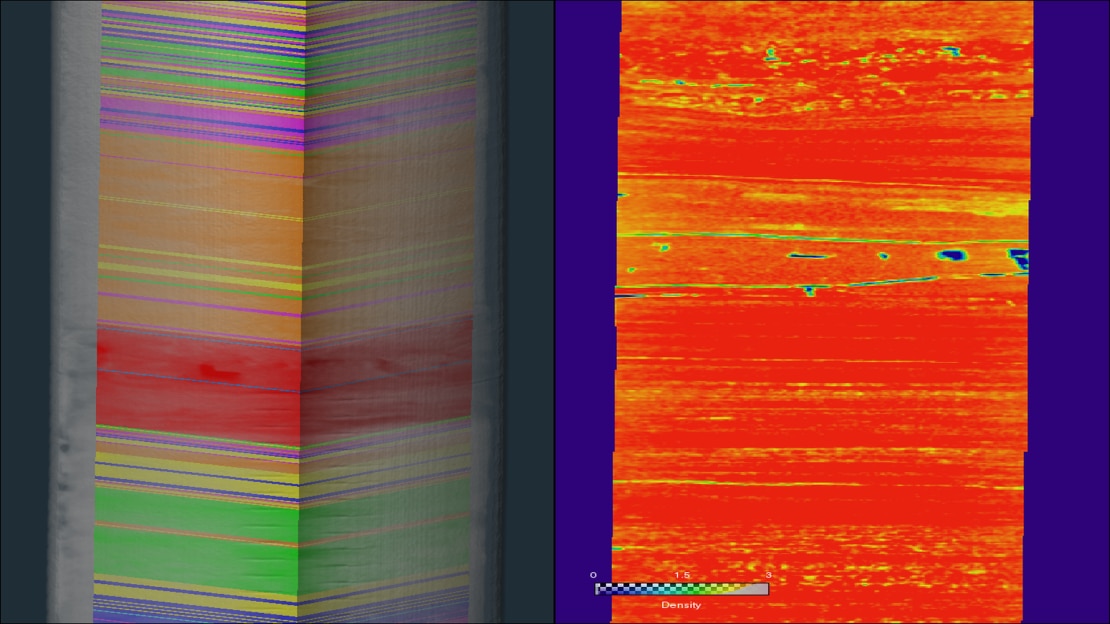Dual Energy CT (DECT)
Using the DECT modules, one can calculate density and effective atomic number for the sample on a voxel-by-voxel basis.

X-ray CT data provide a proxy for the density and atomic number of a sample under study. By acquiring X-ray CT data at two different energy levels and using the DECT tools of this Xtra, one can calculate density and effective atomic number for the sample on a voxel-by-voxel basis. This, for instance, enables you to compare whole-core CT images across multiple formations and wells. In addition, the tools create a characterized materials image based on a list of reference materials that can be considered as a rock-typed image. This technology adds value to whole-core CT analysis workflows, by providing you with actual density information that can be compared with density logs and used for further characterization of rock formations. The following modules and recipe are available as part of the DECT Xtra:
- Linear DECT
- DECT Coefficient Generator
- DECT Mean Intensity
- DECT Merge and Match
- Iterative DECT
- DECT Batch Processing
- Calibration Recipe
If you want to use the DECT Xtra, please click on Request Information on this page. You will be driven to a contact form where you can inquire for a demo and/or commercial information and discussion.
References: Methodology for attainment of density and effective atomic number through dual energy technique using microtomographic images, H. Alves, I. Lima, R.T. Lopes, Applied Radiation and Isotopes, Volume 89, Pages 6-12
Data: Rodolfo Victor, and Masa Prodanovic. Dual-energy medical CT in carbonate rocks. Digital Rocks Portal (August 2017). https://www.digitalrocksportal.org/projects/102